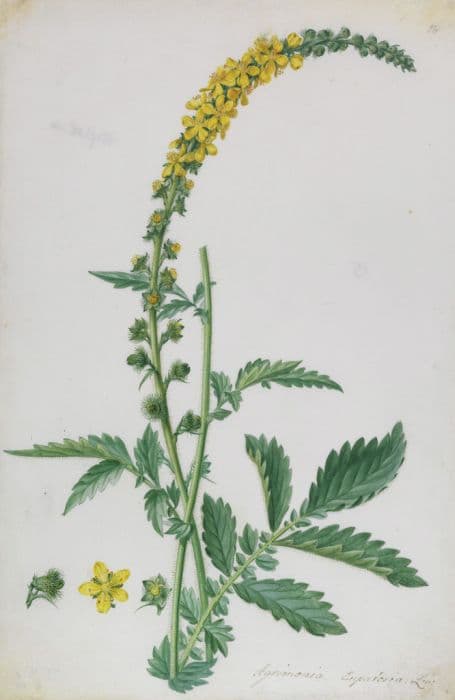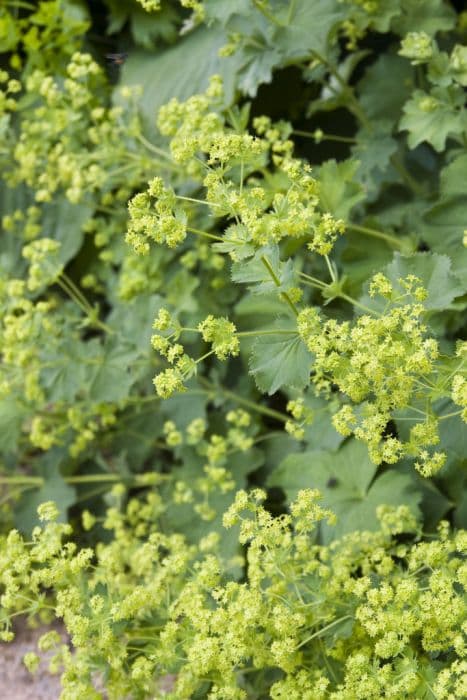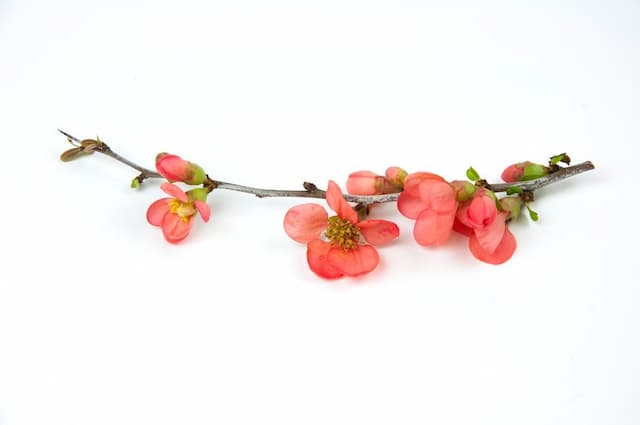Indian Hawthorn Rhaphiolepis umbellata

ABOUT
Rhaphiolepis umbellata, commonly known as Indian Hawthorn, is an evergreen shrub that is widely appreciated for its ornamental qualities. The Indian Hawthorn boasts glossy, leathery leaves that are oval-shaped and have a dark green hue, providing a lush backdrop throughout the year. The edges of the leaves are often toothed, adding a delicate texture to the foliage. During the blooming season, this plant is adorned with attractive clusters of flowers. The blossoms typically exhibit a range of colors from white to pink, and each flower comprises five petals that form a star-like shape. The flowers are not only visually pleasing but also emit a gentle fragrance that can enliven a garden space. Following the flowering period, Indian Hawthorn produces berry-like fruits. These fruits start out as small and green, gradually maturing to a dark, bluish-purple color. The fruits can add interest to the plant's appearance, especially in the winter months when contrasted against the evergreen leaves. Overall, Indian Hawthorn is recognized for its neat and compact appearance, as well as its ability to produce showy flowers and attractive fruits. It is often used in landscaping for hedges, borders, or as a specimen plant due to its alluring characteristics throughout the seasons.
About this plant
 Names
NamesFamily
Rosaceae
Synonyms
Yeddo Hawthorn, Tokyo Cherry
Common names
Rhaphiolepis japonica, Rhaphiolepis ovata, Rhaphiolepis umbellata var. liukiuensis, Eriobotrya umbellata.
 Toxicity
ToxicityTo humans
Indian hawthorn is not generally considered highly toxic to humans. However, like many plants, it may cause mild stomach upset if ingested in large amounts. There have been few reported cases of significant poisoning in humans, and it is often grown as an ornamental plant without major concern for human safety. As with any plant material, individuals may have varying sensitivities, and it is still advisable to avoid ingestion and supervise children to not eat plant parts.
To pets
Indian hawthorn may also pose a risk to pets if ingested. While mild gastrointestinal upset might be the most common symptom, there are limited reports of toxicity in the veterinary literature. The symptoms could include vomiting, diarrhea, or more rarely, more severe effects depending on the amount ingested and the sensitivity of the individual pet. Care should be taken to prevent pets from consuming the plant.
 Characteristics
CharacteristicsLife cycle
Perennials
Foliage type
Evergreen
Color of leaves
Green
Flower color
Pink
Height
3-4 feet (0.91-1.22 meters)
Spread
3-4 feet (0.91-1.22 meters)
Plant type
Shrub
Hardiness zones
7
Native area
Japan
Benefits
 General Benefits
General Benefits- Landscape aesthetics - Rhaphiolepis umbellata, commonly known as Indian Hawthorn, provides ornamental value to landscapes with its compact, evergreen foliage and attractive pink or white flowers.
- Low maintenance - Indian Hawthorn is known for its low maintenance requirements, needing minimal pruning and care once established.
- Drought tolerance - Once established, this plant is relatively drought-tolerant, making it suitable for dry climates and water-wise gardens.
- Pest resistance - Indian Hawthorn is generally resistant to many pests, reducing the need for chemical pesticides.
- Wildlife attraction - The flowers of Indian Hawthorn can attract pollinators like bees and butterflies, while the berries can provide food for birds.
- Versatility - This plant can be used in a variety of landscape applications, including foundation plantings, hedges, and as a groundcover due to its mounding growth habit.
- Coastal suitability - Indian Hawthorn is salt-tolerant and can thrive in coastal environments where other plants may struggle.
- Seasonal interest - With changing seasons, Indian Hawthorn offers different points of interest, from spring flowers to summer fruit and attractive fall foliage.
 Medical Properties
Medical PropertiesThis plant is not used for medical purposes.
 Air-purifying Qualities
Air-purifying QualitiesThis plant is not specifically known for air purifying qualities.
 Other Uses
Other Uses- Rhaphiolepis umbellata, commonly known as the Indian Hawthorn, can be used in bonsai due to its small leaves and attractive flowers, making it suitable for the art of miniature tree shaping.
- It acts as a low-maintenance ground cover for erosion control on slopes because of its dense growth habit and tolerance of various soil types.
- The dense foliage of Indian Hawthorn makes it suitable for creating privacy hedges or screens in landscaping.
- This plant serves as a host for various butterfly and moth species, providing a habitat and food source for caterpillars within an ecological garden setting.
- Indian Hawthorn berries are sometimes used in floral arrangements as they can provide a natural splash of color and texture.
- The plant can be used for espalier, a garden technique that trains plants to grow flat against a support or wall, creating living architectural features.
- In maritime gardens, Indian Hawthorn is appreciated for its salt spray tolerance, making it an ideal choice for coastal landscapes.
- Its compact size and slow growth rate make Indian Hawthorn an appropriate choice for planting in containers or pots for patios and balcony gardens.
- The species can be used as a topiary specimen, where the plants are clipped into clearly defined shapes such as spheres, boxes or even animal forms.
- The textured leaves of Indian Hawthorn can add contrast to sensory gardens, where diverse plant characteristics are used to engage the senses.
Interesting Facts
 Feng Shui
Feng ShuiThe Indian Hawthorn is not used in Feng Shui practice.
 Zodiac Sign Compitability
Zodiac Sign CompitabilityThe Indian Hawthorn is not used in astrology practice.
 Plant Symbolism
Plant Symbolism- Resilience: Rhaphiolepis umbellata, commonly known as Indian Hawthorn, often symbolizes resilience since it is a hardy plant that can withstand various conditions.
- Protection: With its dense growth habit, the Indian Hawthorn is considered to represent protection and is sometimes planted for this purpose.
- Hope: The blooming of Indian Hawthorn flowers can signify hope, reflecting the optimism of seeing beauty emerge in rough conditions.
- Purity: The white flowers produced by the Indian Hawthorn are traditionally associated with purity and innocence.
 Water
WaterIndian hawthorn, the common name for Rhaphiolepis umbellata, requires moderate watering. It should be watered thoroughly, allowing the soil to become slightly dry between watering sessions. Typically, providing about 1 to 1.5 gallons of water once a week during the growing season is sufficient. During the winter months or in cooler climates, you can reduce watering to every other week, ensuring you don't overwater and cause root rot. It's vital to avoid overhead watering to prevent leaf spot diseases, so direct water to the base of the plant.
 Light
LightIndian hawthorn thrives in full sunlight. It should be placed in a spot where it receives at least six to eight hours of direct sunlight daily. While it can tolerate partial shade, the best flowering and foliage density occur when the plant is positioned in an area with ample sunlight.
 Temperature
TemperatureIndian hawthorn can tolerate a wide range of temperatures, but it performs best between 70°F and 90°F. It can survive minimum temperatures down to about 10°F, making it capable of withstanding brief periods of frost. To maintain robust growth and health, keep it protected from extreme cold and avoid temperatures far below the freezing point.
 Pruning
PruningPruning Indian hawthorn is necessary to maintain its shape, remove dead or diseased wood, and encourage bushier growth. The best time to prune is after it has finished flowering in the spring. Typically, it should be pruned annually or as needed to shape the plant and prevent it from becoming too leggy or unkempt.
 Cleaning
CleaningAs needed
 Soil
SoilIndian hawthorn thrives in well-draining soil with a mix of loam, peat, and sand, and prefers a soil pH between 5.5 and 7.5.
 Repotting
RepottingIndian hawthorn should be repotted every 2-3 years to refresh the soil and encourage healthy growth.
 Humidity & Misting
Humidity & MistingIndian hawthorn prefers moderate humidity levels and can adapt to the typical humidity found in most outdoor environments.
 Suitable locations
Suitable locationsIndoor
Place Indian hawthorn in bright, indirect light indoors.
Outdoor
Plant in sun to part shade in well-draining soil.
Hardiness zone
7-11 USDA
 Life cycle
Life cycleThe life cycle of Rhaphiolepis umbellata, commonly known as Yeddo Hawthorn, begins with seed germination, which requires a warm temperature and moist environment. After sprouting, the seedling grows into a juvenile plant, forming a stout stem and developing its characteristic glossy, evergreen leaves. As it matures into an adult, the Yeddo Hawthorn produces fragrant, white or pink flowers in the spring, which are followed by the development of small, dark blue to black fruit. Pollination is crucial for fruit development and can be facilitated by insects attracted to the flowers. The fruits contain seeds, which can be dispersed by wildlife, completing the reproductive cycle. Throughout its life, Rhaphiolepis umbellata can adapt to a range of conditions but prefers full sun to partial shade and well-draining soil to thrive.
 Propogation
PropogationPropogation time
Spring-Early Summer
Propogation: The Indian Hawthorn, Rhaphiolepis umbellata, can be propagated effectively using various techniques, but one of the most popular methods is by softwood cuttings. This approach typically takes place in late spring or early summer when the plant's growth is most vigorous. To propagate by softwood cuttings, a gardener would take a 4 to 6-inch cutting from the plant's current year's growth, ensuring that several leaves are present. The bottom end of the cutting is dipped into a rooting hormone, which encourages root development and increases the chances of successful propagation. The treated cutting is then planted in a well-draining soil mixture, kept moist, and covered with a transparent plastic bag to retain humidity. With consistent temperature and moisture levels, roots usually develop within a few weeks, and once established, the new Indian Hawthorn plants can be transplanted into individual pots or directly into the garden.









